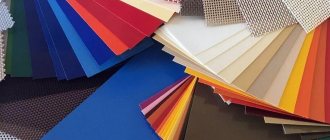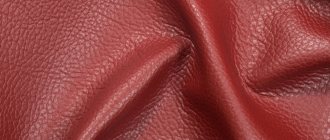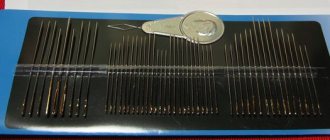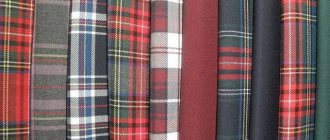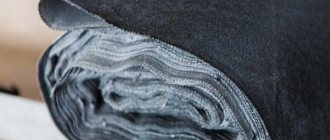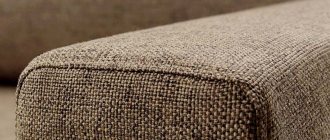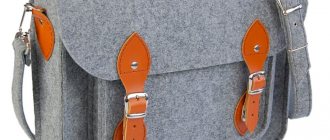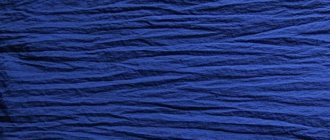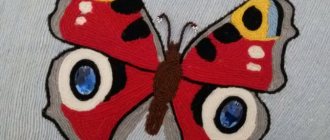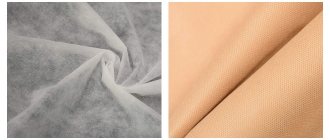Home / Synthetic fabrics
Back
Published: December 28, 2020
Reading time: 3 min
0
189
Proponents of a healthy lifestyle constantly criticize everything chemical. They say that only natural and natural products, including fabrics, are useful for humans. Of course, the natural composition has a number of undeniable advantages. But the strength of such products is not great. Therefore, today artificial materials, for example, PVC fabric, have thoroughly entered our lives.
- 1 Description and physical properties
- 2 Invention of the material
- 3 Composition and production process
- 4 Positive and negative qualities
- 5 Classification
- 6 Areas of use
- 7 Storage and care
- 8 Conclusion
Description and physical properties
PVC is an abbreviation of a chemical compound that stands for polyvinyl chloride. The properties of the polymer are truly unique.
| physical properties | basic meanings | what does this mean in everyday life |
| melting temperature | above 150 degrees, for some materials - over 200 degrees. | Products do not burn. When heated above 120 degrees, they begin to melt and release harmful chlorine vapors. |
| solubility | soluble only in concentrated solutions of hydrofuran and formamide derivatives. | insoluble in water, gasoline or kerosene, resistant to acids or alkalis, with prolonged exposure to acetone, slight swelling is possible |
| strength, limit | with horizontal tension up to 45 MPa, with tension at an angle up to 120 MPa | products are resistant to physical forces that cause product deformation |
| Electrical resistance | from 10 to 12 degrees | unique dielectric properties |
Important. PVC is a material that differs from other natural and artificial fabrics by unique properties that give products made from it superpowers.
Main characteristics
- density - from 200 to 1500 g/m²;
- strength up to 4000 N/5cm;
- the weave of threads in the base of the material can have different ratios (the most common options: 6×6; 7×7; 8×8; 9×9; 12×12).
- tensile strength - from 700 to 850 kg/m;
- temperature range - from +75 to −30˚С (frost-resistant fabrics up to −50-60˚С).
- service life - up to 15 years.
You might be interested in what types of cellular tissue there are, features of the English cell
When choosing a dense material, it is necessary to take into account all its properties, because the quality of the product or structure made from it will depend on this. At the same time, it is not rational to buy a canvas with high characteristics, for example, for a regular canopy.
Invention of the material
The history of the discovery of fabric is ideally described by the Russian folk proverb - better late than never.
The material was first synthesized in 1835 in France. While experimenting with vinyl chloride, Henri Regnault accidentally created the polymer. The notes of the great chemist have been preserved, where he talks about a new unusual substance. But Regnault could not immediately unravel the unique properties of the newly created compound - they forgot about PVC for almost half a century.
In 1878, the polymer again interested scientists. Unusual physical and chemical properties of matter were discovered in the laboratory. But there was no use for such strange qualities of the fabric for the 19th century. The PVC was left again.
In 1913, the German Fritz Klatte drew attention to the fabric. It was Fritz who patented the technology for the production of polyvinyl chloride. But again there was a stop - the First World Wave forced the chemist to abandon further work in this direction.
It wasn't until 1926, virtually a century after its discovery, that the world saw its first PVC product: bathroom curtains. The author of the development, Waldo Silon, began to actively develop the idea of their production in America. In 1931, the first industrial production of products was launched.
In less than 10 years, the world could no longer live without polyvinyl - home, army, production, everywhere the miracle material became indispensable.
Important. Today, PVC has several names - pvc material, film, banner or awning fabric.
Composition and production process
PVC material belongs to the group of artificial fabrics with a mixed composition.
It is because of this structure that the production of matter consists of 2 stages.
The main fabric is woven from lavsan, polyester or nylon. Synthetic threads are tightly woven together. Density ranges from 6x6 to 12x12.
The resulting base is covered with a layer of polyvinyl chloride. The fabric is ready.
Author:
Zakharova Nina Afanasyevna
I hope you like my article! If you find any shortcomings, just write to me about it! I am always ready for a conversation and will answer any questions you have, ask them!
